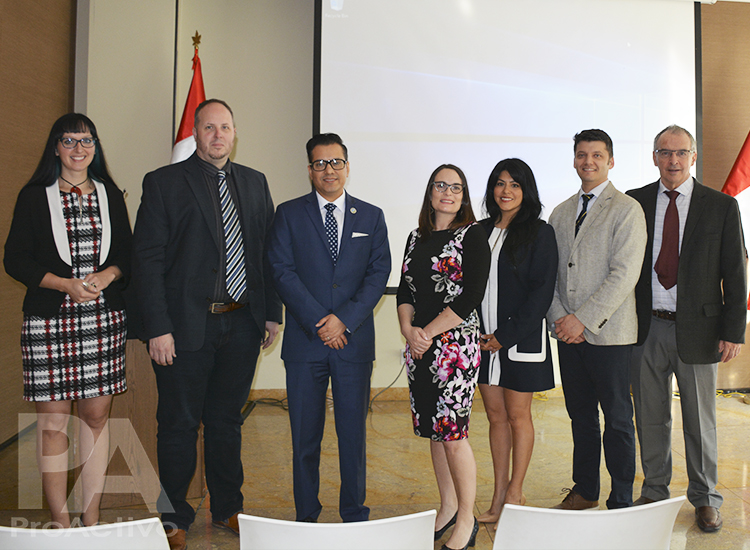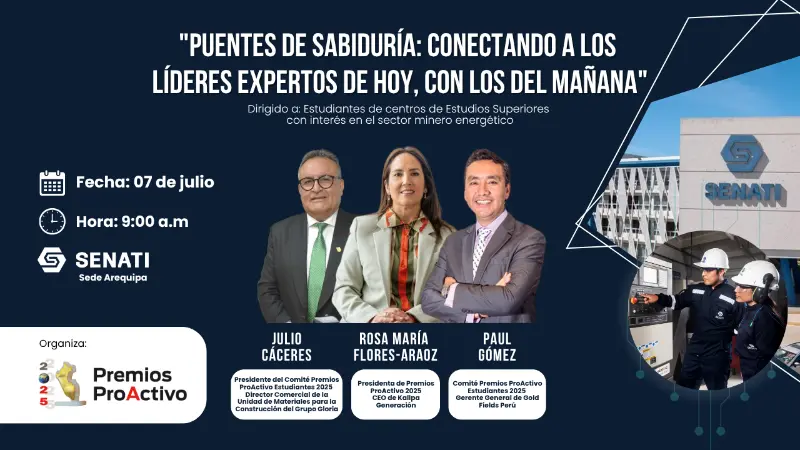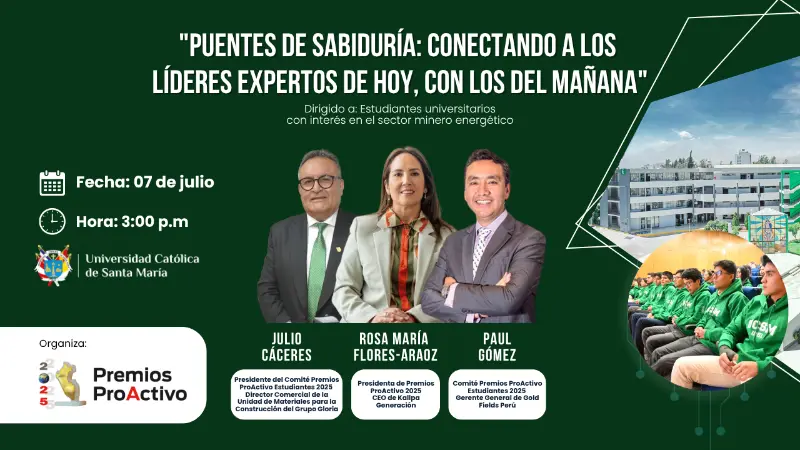ProActivo
Experts talk about the case of the Canadian city Sudbury, which in 40 years went from being one of the most polluted places in the world to being a space where people fish.
The effects of nature’s pollution can be catastrophic. Gray skies, plastic-covered seas, uninhabitable lakes and lands that can no longer produce food are just a few examples. This can lead us to think that we are condemned to finish preying on our world. However, there is still hope. Scientists from Laurentian University of Canada, members of a delegation organized by the Core Foundation, explained the case of Sudbury, a Canadian city that until 40 years ago was one of the most polluted places on the planet and today is an area that contains lakes where people even fish.
Core Foundation, a non-profit entity, brought to Peru researchers capable of contributing to the transformation in places like Cerro de Pasco and others. During its existence, this entity has been characterized by working with peruvian national universities and fostering alliances with its peers from Canada and the United States, aimed at encouraging the transfer of technology and knowledge in an efficient manner.
“We create opportunities in the regions to give the population tools to generate their own wealth,” said Ricardo Torreblanca, president and CEO of the Core Foundation, after referring the multiple actions they develop, economic and food innovation, among others, oriented to that the own people assume an entrepreneurship to leave the poverty.
In this opportunity, the visit to Peru came together with the Center for Excellence in Mining Innovation of Canada (CEMI) and a delegation of Laurentian University (both of Sudbury, Ontario), to present local institutions, authorities and officials a general vision of the Laurentian University and its relevant programs, among them the one aimed at the environmental remediation of the mining sector.
The transformation of Sudbury, the testimony of Dr. Gunn
“I started working in Sudbury in 1978, back then it was not a place where I would have liked to live, but two years ago it was named the happiest city in Canada. It has the cleanest air in all of Ontario. How did this happen? Air pollution was reduced by 97% during that period. How was it achieved? First of all, we had a good government with good regulations. The companies I worked for were not ready to deal with this. Once these regulations were put into practice, technology and innovation were needed, “said John Gunn, PhD, Canadian Tier 1 research professor for stressed aquatic systems, during his presentation at the Canadian embassy; and director of “Living with Lakes Center”, Laurentian University.
The scientist added that in this way, both mining and other companies found a way to continue making money, but without polluting. “Some think that in the modern economy you can not have clean air. That is not true”, he said.
Monitoring programs are important for credibility
Gunn recalled that during the years of mismanagement in Sudbury, 7,000 lakes were destroyed and natural areas reduced by 100,000 hectares. Gunn said that for mining companies to have credibility it is very important that they have constant monitoring programs through satellites to avoid re-polluting. “What really interests the communities here is having clean water, either for their fish and their consumption or for other uses. To repair the damages in the nature is something very expensive, for that reason what I recommend is to avoid to contaminate in the first place. The second is to control pollution as close to the source of production and industrial processes”, he explained.
The scientist affirmed that, every time he visits the communities of Peru where mining activities take place, he observes that the inhabitants do not trust and insist that there can be no mining activity without agriculture near their zones.
“This is also the role of universities. We have to be in the middle, be the honest interpreters of science and technology to make sure that we can live together with mining and clean water in the communities. The message I give in the other communities I have visited is that you must have good information and monitoring. This work should be done by government agencies, but it is very important that universities share that data with the communities. It is important to know how to communicate all this to the communities and to understand the message. The communities are concerned about the challenge of having mining in their area. They do not care about the profits and we all need the metals, what they want is to put into practice a green and sustainable mining. We can not accept the mining technology of the past”, he said.
With the mining strength Sudbury was transformed
In tune with Gunn, Yves Pelletier, associate vice president of academic and French-speaking affairs at Laurentian University, noted that Sudbury is a very mining city, which in its history has produced more than 8 million tons of copper and more than 8 million tons. of nickel. “We have more than 77 operating miles that have generated more than 330 million dollars. Due to the wealth and strength of our mining force, we have developed a series of supply chain companies that work with an international focus. We have been able to transform Sudbury and we can do it with other regions as well”, he remarked.
Economic development: mining cluster and other agrarian, hand in hand with universities
Referring to the advance of Core Foundation in Peru, Ricardo Torreblanca, informed that through agreements with the regions of Cusco, Junín, Tacna, Moquegua, initiated a process aimed at the formation of an international mining cluster in the country, which will work with CEMI and Core Foundation. “The objective is to create new technologies with universities and open up the local market on a global scale, through the cluster such as Canada and other countries”, he said.
He said that it is intended that in Peru, each region involved has a mining cluster in charge of the regional government and the local university and under the umbrella of an international mining cluster. This will capitalize on the movement of markets in other countries, including Canada.
He also announced that by 2021, thanks to the initiatives they develop, they will have the necessary data to implement a national agrarian cluster, which will work just like its mining partner, uniting foreign markets with Arequipa, Junín, Tacna, Moquegua and other regions to be adhered.
Torreblanca reported that the Moquegua regional government has already signed a Memorandum of Understanding, which will promote education and research in agriculture, security, defense, health, engineering, geology, environment, energy and mining in the region, through various universities an agreement has already been reached between the Laurentian University (Canada), the National University of Moquegua (Peru), the regional government of Moquegua, the Jorge Basadre University (Tacna), the regional government of Tacna and the Santa María Catholic University of Arequipa.





